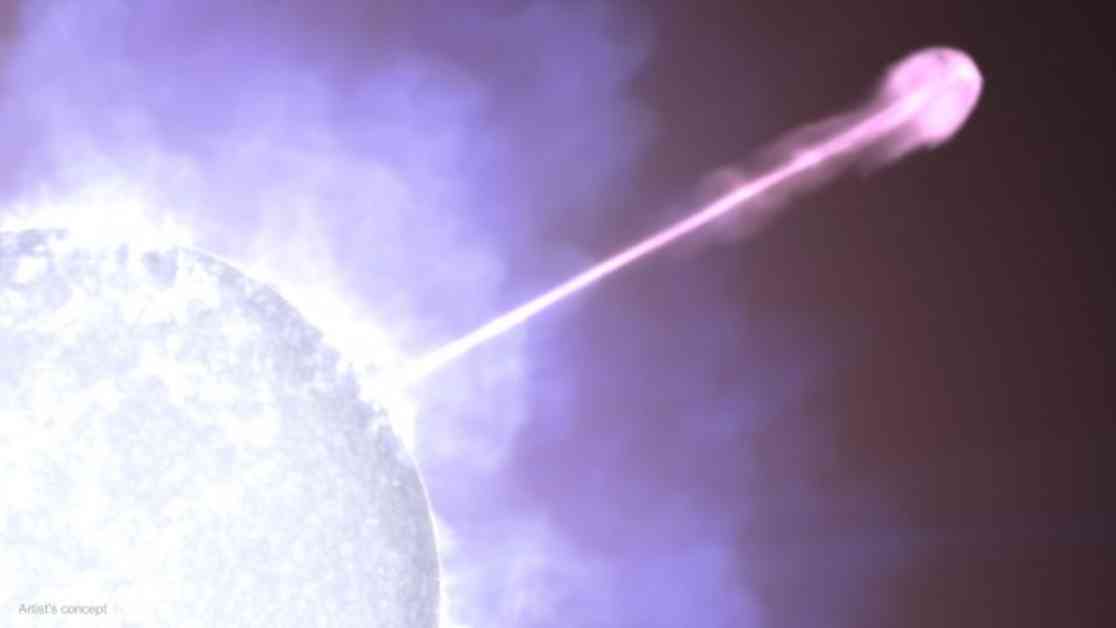A new feature has been discovered in the brightest gamma-ray burst by NASA’s Fermi Mission. Lead researcher Maria Edvige Ravasio expressed her excitement about this discovery, which is the first high-confidence emission line seen in 50 years of studying GRBs. The findings were published in the journal Science on July 26.
The interaction of matter with light can result in energy absorption and reemission in characteristic ways. These interactions can impact the brightness of specific colors or energies, revealing information about the chemical elements involved. Spectral features at higher energies can also unveil particle processes like matter and antimatter annihilation to produce gamma rays.
Previous studies have hinted at absorption and emission features in other GRBs, but those turned out to be statistical fluctuations upon further examination. However, the feature observed in the BOAT GRB is different, with odds of being a noise fluctuation less than one in half a billion.
GRBs are the most powerful explosions in the universe, emitting high-energy gamma rays. They occur when a massive star’s core collapses to form a rapidly spinning black hole, releasing oppositely directed particle jets. The BOAT, or GRB 221009A, erupted on October 9, 2022, and was likely the brightest burst to appear in Earth’s skies in 10,000 years.
The emission line detected in the BOAT GRB indicates the annihilation of electrons and positrons. When these particles collide, they produce gamma rays, with the emission becoming blueshifted due to the high speeds in the jet, reaching energies as high as 12 MeV.
While scientists have been studying these cosmic explosions for decades, the details of how these jets work remain unclear. Clues like the emission line discovered in the BOAT GRB will help researchers delve deeper into this extreme environment.
The Fermi Gamma-ray Space Telescope, managed by NASA’s Goddard Space Flight Center, is a collaboration between astrophysics and particle physics researchers. Contributions from various countries have been crucial in the development of Fermi, aiding in groundbreaking discoveries like the one in the BOAT GRB.












